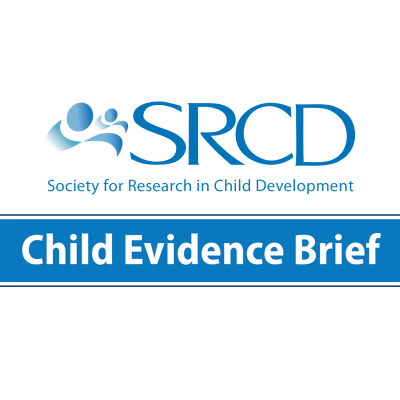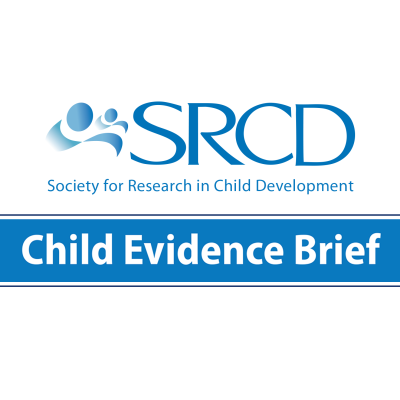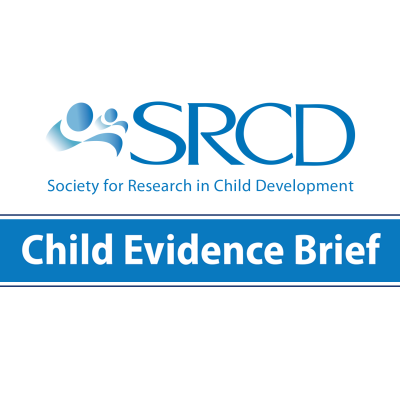Raising Healthy Children: Strengthening Children’s Development in Early Childhood and School Settings
Child Development Research in Brief, 2011
Early childhood settings and schools play an important role in raising healthy children. The research summarized in this section of the January/February special issue of Child Development on Raising Healthy Children identifies a number of program approaches for early childhood and school settings that strengthen not only children’s social and emotional development but also their learning. Specific programs are also effective at addressing such serious problems as bullying and conduct disorder.
What Does The Research Tell Us?
Social and Emotional Learning (SEL) programs implemented in schools show overall evidence of supporting children’s social and emotional development as well as learning. Because SEL programs are now common in schools it is important to document their effects. A meta-analysis reported on in the special issue of Child Development focused on 213 studies of school-wide SEL programs for students in kindergarten through high school. Results indicate that, overall, SEL program participants showed more social and emotional skills, positive attitudes toward self and others, and positive social behavior. Participants in SEL programs also showed lower levels of conduct problems and emotional distress. When school staff implemented these interventions, students also showed improved achievement test scores and grades. Program effects were stronger when programs had specific features (sequenced activities, active learning, a focus on social and emotional skills, and targeting of specific skills), and did not have implementation problems.2
Preschool programs that emphasize socialemotional development can help children develop academic skills as well. For example, the Chicago School Readiness Project (CSRP) is a classroombased intervention implemented in Head Start classrooms that aimed at supporting the development of children’s self-regulation (ability to modulate their attention and impulsivity).The intervention focused on providing teachers with strategies to improve classroom management through training and classroom-based consultation by a mental health consultant, who also worked with teachers on their own stress. In a randomized controlled trial, CSRP preschoolers showed greater gains than children in the control group not only in self-regulation but also in receptive vocabulary, letter naming and early math skills, even though the intervention did not explicitly focus on pre-academic skills. The findings indicate that by supporting children’s self-regulation, CSRP also contributed to their learning.7
A strong emphasis on family engagement can be effectively integrated into public preschool and elementary school programs. For example, the Chicago Public Schools Child-Parent Center (CPC) Education Program provides educational and familysupport services to low-income families with children ages 3-9. In early childhood, the classroom-based intervention emphasized language and math skills. The program also involved a strong family outreach component, engaging parents in classroom and school events, and providing services such as home visitation. Participation during preschool was associated in K-12 with lower rates of grade retention, special education, child maltreatment, out of home placement and juvenile arrest. Effects for young adult outcomes were found for such outcomes as higher educational attainment and lower rates of incarceration. Cost-benefit analyses with outcomes through age 26 indicate that CPC participation during preschool was associated with a return of $10.83 per dollar invested. The economic benefits of the schoolage component and extended participation was smaller than for preschool but still sizeable (a return of $3.97 and $8.24 per dollar invested respectively).8
School-based mentoring and engagement in community projects can have positive effects. Big Brothers/Big Sisters school-based mentoring program matches at-risk youth (6-18yrs) with volunteer mentors, often from local businesses or high schools. Mentors are asked to meet with the youth at least weekly. In a randomized controlled trial, at the end of one school year, teachers reported small gains in academic performance for mentored youth, who themselves reported improvements in their academic abilities and greater likelihood of having a special adult in their lives. While academic gains were not sustained into the second school year, mentored youth continued to be more likely to report having a relationship with a caring adult.4 Enriching, extra-curricular experiences can help adolescents develop skills in “agency,” or the ability to work systematically towards goals. In a descriptive study, ethnically diverse youth (13-21yrs) participating in arts and leadership programs reported that they learned specific skills about working towards goals, such as mobilizing and regulating their effort, organizing the tasks in their projects, and strategic thinking. A majority of youth reported that these skills transferred to other contexts, such as completing schoolwork.6
Specific school-based programs can also be effective at addressing serious behavior problems. Bullying has become a pervasive problem in schools. In a study with 5th, 8th and 11th graders, students revealed in focus groups that they viewed some amount of bullying as an expected part of peer interactions and tended to perceive the targets of bullying as having low self-esteem. Normative beliefs supporting bullying and low self-esteem emerged in surveys as the strongest predictors of reported increases in bullying and victimization respectively.3 KiVa, a national schoolbased anti-bullying intervention in Finland, aims to increase empathy, self-efficacy and antibullying attitudes in onlookers so they support the victim instead of encouraging the bully. Students in grades 4-6 receive 20 hours of interactive lessons with these goals and individual cases of bullying are addressed by teams of teachers. A randomized control trial indicated that after 9 months of intervention, students in KiVa schools were less often victimized, and reported that they bullied other students less and assisted and reinforced bullies less.5 Fast Track is an early intervention program to prevent serious adolescent violence, based in emerging science of how violence develops across the lifespan. Screening in kindergarten (teacher ratings and parent reports of aggressive behavior) identified 891 highestrisk children, who were then randomly assigned to receive the Fast Track intervention or not. Intervention families received an integrated system of parent training, home visits, tutoring, peer coaching, and social cognitive skills training across a ten year period. Follow-up at the end of high school, two years after the intervention ended, revealed that among the highest-risk sub-group, those children who had been assigned to receive the intervention were only half as likely to be diagnosed with psychiatric conduct disorder. This study demonstrates that high-risk children are not destined to lives of serious violence and that early intervention can deflect the trajectory of their development.1
Implications for Policy and Practice
Policymakers and practitioners can work to implement evidence-based programs that focus on children’s social and emotional learning and development. Rigorous studies indicate that:
- Social and emotional learning programs that are appropriate to diverse communities and varying age ranges can improve social and emotional development as well as academic performance.
- Programs aimed at strengthening specific social and emotional skills can reduce bullying and diminish the likelihood of serious behavior problems among high-risk students.
- There may be significant savings to society with the implementation of specific early childhood and school-based approaches, as recent cost-benefit analyses are beginning to show.
References
All of the papers cited in this brief are published in Child Development (2011), Volume 82, Issue 1 and include:
1 Conduct Problems Prevention Research Group. The effects of the Fast Track preventive intervention on the development of conduct disorder across childhood, 331–345.
2 Durlak, J. A, Weissberg, R. P., Dymnicki, A. B., Taylor, R. D., & Schellinger, K. B. The impact of enhancing students’ social and emotional learning: A meta-analysis of school-based universal interventions, 405- 432.
3 Guerra, N. G., Williams, K. R., & Sadek, S. Understanding bullying and victimization during childhood and adolescence: A mixed methods study, 295-310.
4 Herrera, C., Grossman, J. B., Kauh, T. J., & McMaken, J. Mentoring in schools: An impact study of Big Brothers Big Sisters school-based mentoring, 346-361.
5 Kärnä, A., Voeten, M., Little, T. D., Poskiparta, E., Kaljonen, A., & Salmivalli, C. A large-scale evaluation of the KiVa anti-bullying program: Grades 4-6, 311-330.
6 Larson, R. W., & Angus, R. M. Adolescents’ development of skills for agency in youth programs: Learning to think strategically, 277-294.
7 Raver, C. C., Jones, S. M., Li-Grining, C., Zhai, F., Bub, K., & Pressler, E. CSRP’s impact on low-income preschoolers’ pre-academic skills: Self-regulation as a mediating mechanism, 362-378.
8 Reynolds, A. J., Temple, J. A., White, B. A., Ou, S-R., & Robertson, D. L. Age-26 cost-benefit analysis of the Child-Parent Center early education program, 379-404.
This special issue is introduced with an overview and synthesis by the co-editors, Nancy G. Guerra, Sandra Graham and Patrick H. Tolan.


